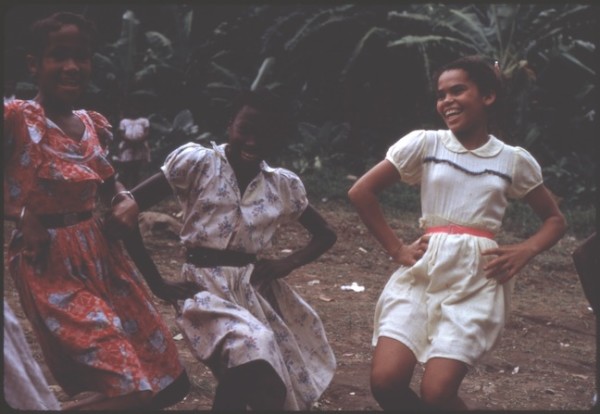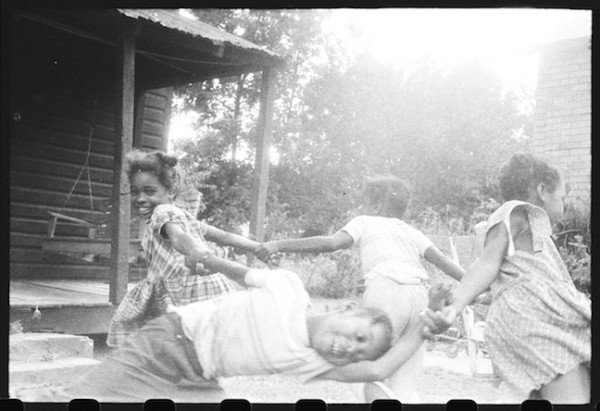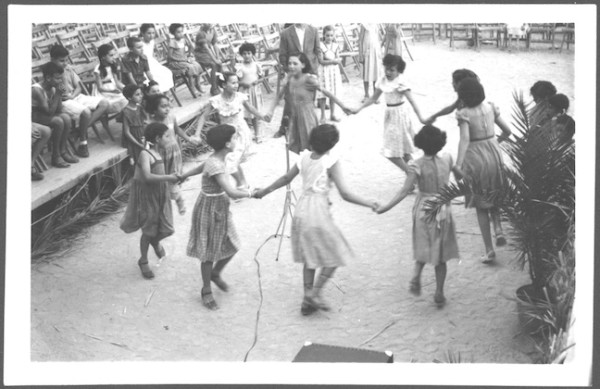Click here to print
How Do People Dance? Choreometrics on Film.
posted August 2, 2017
How do people dance, and how do cultural factors affect how they do?
The Association for Cultural Equity in New York, which musicologist Alan Lomax founded to explore and preserve expressive traditions such as music and dance, will help to answer such questions by using a grant from the National Film Preservation Foundation to restore and care for a set of “choreometric” films that Lomax and two colleagues made.
n
In the mid-20th century, anthropologists and other observers of human behavior theorized about unconscious meaning in dance and other cultural practices, and that gave rise, in 1965, to choreometrics, the study of dance as formalized, culturally shaped communication.
The devisers of the study were Lomax and two dance theorists and practitioners, Irmgard Bartenieff, who pioneered dance therapy, and Forrestine Paulay. They decided to use a large sample of film recordings of dance as a way to identify elements of style across various cultures. They also wished to develop methods for analyzing, describing, and codifying movements.
Think of Noam Chomsky’s epochal 1957 work, Syntactic Structures, transposed to dance. A more direct forebear of choreometrics was Ray L. Birdwhistell (1918-1994), who in the mid-20th century theorized about unconscious meaning in non-verbal behaviors. What, he asked, might be the meanings of body attitude, movement, and synchrony?
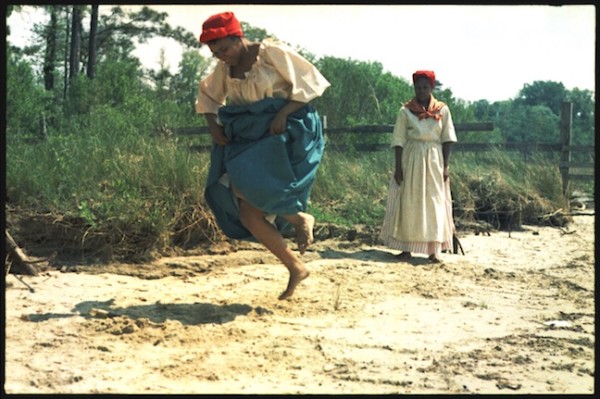
Stills from films shot by Alan Lomax, courtesy of Association for Cultural Equity. Top: Schoolgirls playing ring game. La Plaine, Dominica, June 1962. Above: Dancers on beach, on the set of “Music of Williamsburg” film. Williamsburg, Virginia, May 1960. Below: Bobby Jean Hemphill, Ruby Hemphill, Lucille Rice, and unidentified girl (order unknown) playing ring game at the home of Sidney Carter. Senatobia, Mississippi, September 1959. Bottom: The Devil and children at Fête de Juillet celebration. Cinquefrondi, Calabria, Italy, August 1954; Girls dancing in a ring at the Palma Festival. Palma de Mallorca, Spain, June 1952.
Also important in Paulay, Lomax, and Bartenieff’s formulation of their new study, as a brief from the Association for Cultural Equity explains, was W. S. Condon’s discovery of precise rhythmic synchrony at the micro level among participants in conversations.
In 1964 Lomax had not yet found significant cross-cultural correlations for rhythm in song. Considering movement to be a more primary form of expression than song, Birdwhistell suggested that Lomax look at performance style in dance. He suggested that Lomax might find it useful to adapt a system of analyzing human movement developed by Rudolf Laban (1879-1958), still used today.
Lomax enlisted Bartenieff and her then-student Paulay because they had studied with Laban, and had already applied his method to physical therapy, dance therapy, and movement-oriented psychological research.
The originators of choreometrics developed a vocabulary for describing styles, across cultures, and set out to geographically map variables of dance, all to bring rigor and a trans-cultural perspective to dance movement. They collected and analyzed films of work and dance from hundreds of cultures and catalogued common or differing elements. “They were interested,” the Association for Cultural Equity explains, “in shared dynamic patterns of body movement, focusing first on whether actions were predominantly linear, curving, or spiraling; whether transitions tended to be curvilinear or pointed; if and how the torso was articulated; on the spatial emphasis of body attitude; and on the way in which movement spread through the body.”
Lomax, Bartenieff, and Paulay spent eight years gathering footage from consultants, television companies, film archives and visual anthropologists. That collecting continued through the 1970s, and now stands at 2,138 film segments and coded dance sequences. The material was often tainted by prejudices of its time, but Lomax once explained: “We come to it with an observational approach like that used by the ordinary person in everyday life, which enables him to differentiate constantly between different classes of visual experience and to behave appropriately in relation to these varieties of experience.”
Lomax and his colleagues considered such variables as gender differentials, step styles, the use of body parts, patterns of leadership and group synchrony, audience roles, composition, and organization of dance and musical groups.
Studying film of people working, they formed the theory that dance epitomizes movements in everyday activities. That led them to 18 distinct, broad categories of world dance traditions. Lomax explained in 1987: “We took a systems approach – that is, instead of looking at an object in one respect, we took a great many important features, and we saw how the profile of those features changed as you moved across cultures. … We feel very clearly that dance is a kind of a center of the main aspects of movement style that links people together in a culture.”
The Association for Cultural Equity, which is located at Hunter College in New York, is in the midst of a large project to recompile and publish the choreometrics dataset – the 2,128 coded analyses and their metadata. Forrestine Paulay is a key member of the association’s current Choreometrics team. Among the team’s planned activities is to produce a DVD demonstrating and explaining the approach. (In 2007, The Rhythms of Earth appeared, offering four teaching films on DVD.)
The Association’s grant from the National Film Preservation Foundation will enable it to preserve seven films from the Presentation Library that Ms. Paulay selected as particularly useful in teaching and public dissemination of choreometrics. They are compilations of short (mostly only 10 feet in length, but up to 50 feet), 16mm film, spliced together. (Some other technical details: the spliced-together, black-and-white or color film segments are single or double perforated, and when “single perf” are of varied optical-track area. They have no magnetic track audio; all are heads out and emulsion out. The total length of the selected films is nearly 2,700 feet. The reels are in good condition; some splices need to be replaced; there is no spoke damage, cupping, or visible shrinkage. Colorlab will make the repairs.)
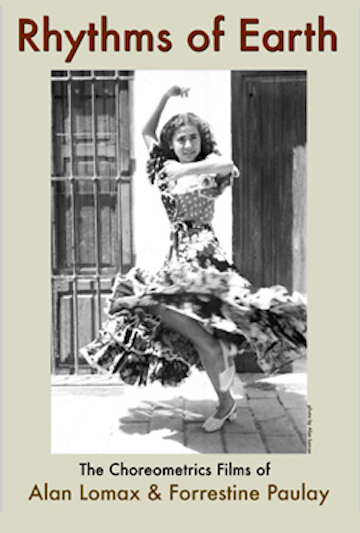 The ACE will make the films available in digitized and hard copy formats, to exemplify features of dance that aspiring dancers and chorographers can learn and adapt, and that will more generally serve to generate awareness of cultural variation and commonality. That effect can extend beyond dance and general cultural awareness, AEC pointed out in its application for a National Film Preservation Foundation basic-preservation grant. It wrote: “The data and methods for studying global performance practices can and have been applied to fields as diverse as evolutionary psychology, historical genetics, and human ecology.”
The ACE will make the films available in digitized and hard copy formats, to exemplify features of dance that aspiring dancers and chorographers can learn and adapt, and that will more generally serve to generate awareness of cultural variation and commonality. That effect can extend beyond dance and general cultural awareness, AEC pointed out in its application for a National Film Preservation Foundation basic-preservation grant. It wrote: “The data and methods for studying global performance practices can and have been applied to fields as diverse as evolutionary psychology, historical genetics, and human ecology.”
The choreometrics films that Lomax and his colleagues collected are part of a larger Presentation Film Library, which is part of the Alan Lomax Collection at the American Folklife Center at the U.S. Library of Congress. That large collection has 3,565 film elements that Lomax and others created or collected in their effort to document dance, music, and spoken-word performances around the world.
The Library acquired the Lomax collection in 2004. In recent years, the Association for Cultural Equity has undertaken to clear the way for public dissemination of the material. It contacted the makers and copyright holders of as many of the films in the collection as possible — a tall order, as the aging material had always been held primarily for research purposes, rather than broad distribution.
The films it will preserve with the NFPF grant are not known to exist anywhere else. The Association for Cultural Equity plans to provide access to digitized versions of the films, with introductions from Ms. Paulay, via the Global Jukebox, an online platform that already provides some ACE teaching resources.
The AEC’s efforts to preserve and disseminate the choreometrics material and approaches embodied in the Presentation Library, in digitized form, “is an essential part of the Association for Cultural Equity’s overall mission to preserve local expressive forms and discover the connections among them,” the association’s successful grant proposal said. “It is as germane and urgent today as it was in Lomax’s time to recognize the phenomenal diversity in these expressive styles, while acknowledging the communicative drive that makes us human.”
— Peter Monaghan
Printed from Moving Image Archive News: http://www.movingimagearchivenews.org
URL to article: http://www.movingimagearchivenews.org/how-do-people-dance-choreometrics-tells-the-tale/
Click here to print
